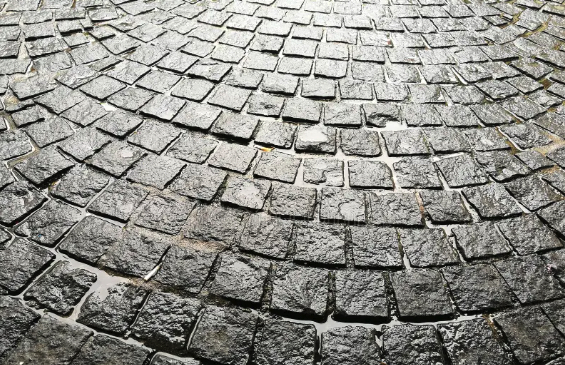Does stamped concrete get slippery when wet?

Stamped concrete has become a popular choice for homeowners and businesses alike due to its versatility, durability, and aesthetic appeal. It allows you to mimic the look of natural materials like stone, brick, or wood while providing the benefits of concrete. However, like any surface, stamped concrete can pose potential safety concerns, especially when it gets wet. In this article, we will delve into the factors that influence the slipperiness of stamped concrete when wet and explore ways to mitigate this issue.
Understanding Stamped Concrete
Before we discuss the slipperiness of stamped concrete when wet, it’s essential to understand what stamped concrete is and how it is created. Stamped concrete is a decorative concrete surface that is patterned, textured, or embossed to resemble various natural materials. It is commonly used for patios, walkways, driveways, and even interior floors.
The process of creating stamped concrete involves:
- Pouring Concrete: A concrete mixture is poured onto the prepared surface, and it is leveled and smoothed.
- Stamping: While the concrete is still in its plastic state (before it fully cures), specialized stamps with patterns and textures are pressed into the surface to create the desired look.
- Coloring: Stamped concrete can be colored with integral pigments, color hardeners, or stains to achieve the desired appearance.
- Sealing: After the concrete has cured, it is sealed to enhance its durability and protect it from the elements.
Factors Affecting Slipperiness When Wet
The slipperiness of stamped concrete when wet can vary depending on several factors:
- Texture: The texture of stamped concrete is a significant factor in determining its slip resistance. Stamped concrete can be finished with various levels of texture, from relatively smooth to highly textured. Textured surfaces generally provide better slip resistance as they create more friction underfoot.
- Sealers: The type of sealer used on stamped concrete can affect its slipperiness when wet. Sealers with a glossy or smooth finish may increase the risk of slipping, as they reduce the friction between the surface and footwear. In contrast, matte or textured sealers can enhance slip resistance.
- Surface Contaminants: Any substance that accumulates on the surface of stamped concrete, such as dirt, moss, algae, or oil, can make it more slippery when wet. Regular cleaning and maintenance are essential to prevent the buildup of contaminants.
- Grout Lines: Stamped concrete often features grout lines or joints between the stamped patterns. These joints can collect water and create a potential slip hazard if not properly designed or maintained.
- Environmental Conditions: Weather conditions play a crucial role in the slipperiness of stamped concrete when wet. Rain, ice, and snow can significantly increase the risk of slipping. Proper drainage systems and de-icing measures can help mitigate these risks.
- Footwear: The type of footwear worn on stamped concrete also influences slip resistance. Treaded or rubber-soled shoes provide better traction on wet surfaces compared to smooth-soled shoes.
Mitigating Slipperiness on Stamped Concrete
To minimize the slipperiness of stamped concrete when wet and ensure a safe walking surface, consider the following measures:
- Choose the Right Texture: When installing stamped concrete, opt for a textured finish that provides adequate slip resistance. Discuss texture options with your concrete contractor to find the best fit for your specific needs.
- Use Slip-Resistant Sealers: Select sealers that enhance slip resistance. Matte or non-glossy sealers are generally better choices for outdoor applications, as they maintain or improve traction.
- Regular Cleaning and Maintenance: Keep your stamped concrete surface clean and free from debris, moss, algae, and other contaminants. Pressure washing and scrubbing with a stiff brush can help maintain a non-slip surface.
- Consider Anti-Slip Additives: Some sealers and coatings can be mixed with anti-slip additives to improve traction. These additives typically consist of fine particles that create friction on the surface.
- Proper Drainage: Ensure that your stamped concrete surface has adequate drainage to prevent the accumulation of water. Proper slope and the installation of drainage channels can help.
- Snow and Ice Removal: In colder climates, take appropriate measures to remove snow and ice promptly. Use ice melters or sand to provide traction on icy surfaces.
- Warning Signs: Consider placing warning signs or mats in areas where the risk of slipping is higher, especially during inclement weather.
- Footwear: Encourage the use of appropriate footwear with good traction on wet surfaces, especially in areas prone to wet conditions.
Conclusion
Stamped concrete is a versatile and attractive option for various outdoor and indoor applications. While it offers many benefits, including aesthetics and durability, it can become slippery when wet, potentially leading to slip and fall accidents. Understanding the factors that influence the slipperiness of stamped concrete, such as texture, sealers, contaminants, and environmental conditions, is essential for making it safer.
By choosing the right texture, using slip-resistant sealers, practicing regular maintenance, and implementing proper drainage and safety measures, you can enjoy the beauty of stamped concrete while minimizing the risk of accidents caused by slipperiness when wet. Always prioritize safety and take the necessary precautions to ensure a secure walking surface for yourself and others.




